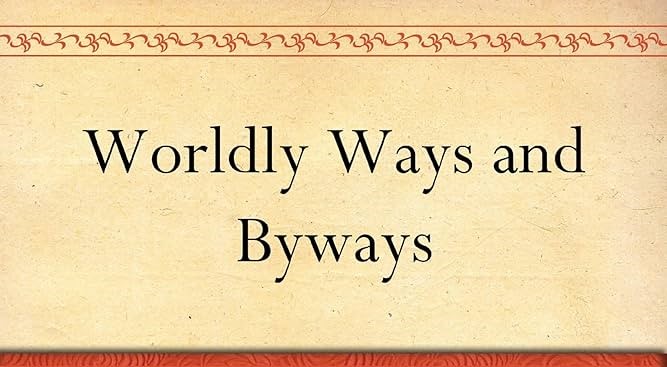Chapter 40 — Introspection
byChapter 40 — Introspection opens with a quiet meditation on the close of a year, using this transition as an invitation to turn inward. This moment marks not just the turning of a calendar page, but an opportunity for thoughtful reflection on the journey taken thus far. The chapter frames introspection not as an indulgence, but as a vital ritual—one that allows individuals to check in with their emotional selves and recalibrate. The comparison made between the mind and a large, mostly uninhabited mansion feels especially apt. Most people, it observes, occupy only familiar corridors of memory or self-perception, rarely venturing into deeper or darker rooms. These mental “spaces” are often curated with specific memories, experiences, and emotions that one revisits either for comfort or caution, much like Queen Victoria famously maintained her childhood quarters in Kensington Palace as an untouched shrine to her beginnings.
In this metaphorical dwelling of the mind, each individual holds rooms shaped by joy, sorrow, failure, and triumph—rooms that are sometimes avoided, often out of fear of what they may still contain. The chapter gently challenges this avoidance, suggesting that personal growth comes not from staying in the light but from being willing to sit for a moment in the darker corners. Queen Victoria’s emotional practice of preserving her past becomes a symbol of resilience and continuity. In keeping those spaces intact, she found a way to honor both where she came from and who she had become. The text draws a universal parallel—our emotional architecture functions similarly. We preserve memories, not to live in them, but to understand them.
Many people, however, spend their lives in distraction, decorating their mental houses only with what feels safe, refusing to unlock rooms where pain or guilt may reside. Yet true introspection demands that we engage with these neglected places. The chapter does not romanticize this process. Instead, it acknowledges that reflection can feel daunting, but insists it is necessary. Revisiting unresolved memories, whether joyful or painful, is a way to create emotional coherence. When we name and understand our feelings from the past, they stop shaping our present through confusion or avoidance. This becomes an act of reclaiming ownership over one’s internal life.
The chapter also touches on how introspection strengthens identity and provides clarity. Just as the Queen sought continuity through the tangible preservation of her youth, individuals are invited to find emotional continuity through conscious recollection. By examining who we were at different points in life, we gain insight into who we are becoming. This connection across time fosters not only personal growth but emotional stability. In a world increasingly driven by distraction and superficial gratification, the chapter positions introspection as both an act of courage and resistance. It urges the reader to make peace with their inner world, not by rewriting the past, but by understanding it and allowing it to live alongside the present.
Moreover, the text highlights that this practice doesn’t require elaborate rituals. Even a quiet moment alone can act as a doorway into meaningful self-awareness. When we reflect during times of change—such as the year’s end—we create space for self-correction, gratitude, and renewed direction. The implication here is that just as a well-maintained home supports a calm and stable life, a well-visited mind allows for emotional resilience. The psychological benefit of this practice is supported by research in modern psychology, which shows that self-reflection can reduce anxiety, improve decision-making, and help manage emotional reactivity. Journaling, quiet meditation, or simply walking alone without distraction are all avenues into this important work.
As the chapter draws to a close, the metaphor of Queen Victoria’s preserved childhood space becomes even more profound. Her act was not one of clinging to the past, but of grounding herself in it—a reminder of where she began, even as she carried the immense weight of monarchy. Likewise, each person can preserve the essence of who they were—not in denial of change, but to foster self-continuity. By fully inhabiting our mental houses, including rooms we once kept locked, we integrate the full spectrum of our humanity. We are no longer defined solely by what we’ve endured but by how we’ve understood it.
In the final moments of the chapter, solitude is positioned not as loneliness, but as a companion for truth. It is in solitude, the text argues, that we are most likely to hear the echoes of our authentic selves. These echoes, once frightening, can become familiar if we allow ourselves to truly listen. Chapter 40 — Introspection does not offer a resolution, but a path—an invitation to courageously walk through the chambers of our memory, illuminate what lies hidden, and in doing so, come home to ourselves.


